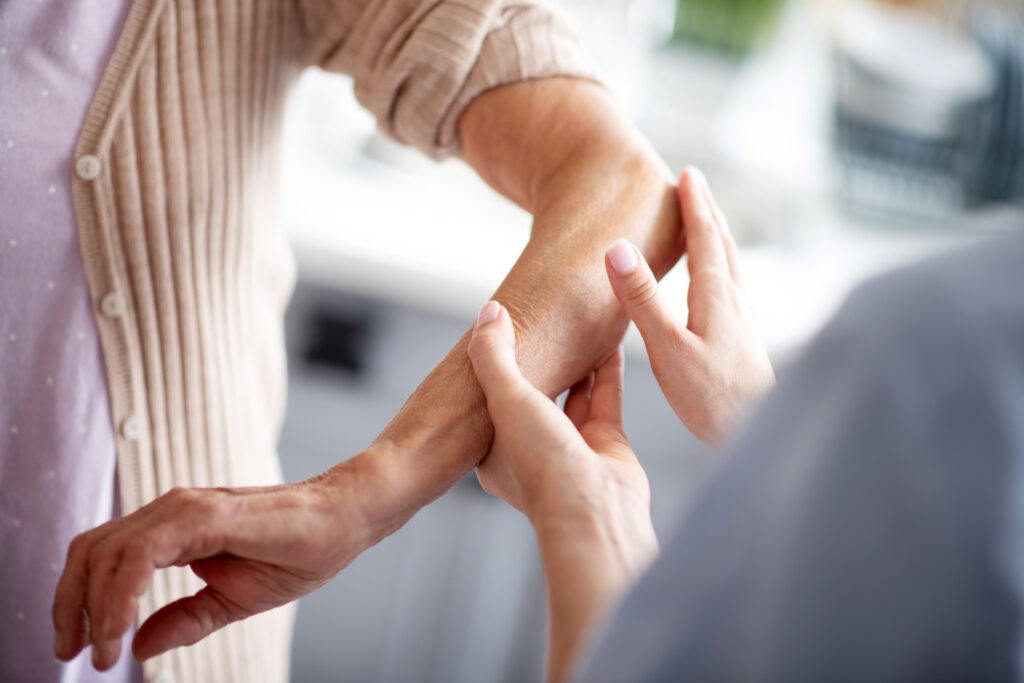You've just pushed your limits on the field, but now you're faced with the reality of a sports injury. Understanding how to navigate this setback is vital for your recovery. Immediate care techniques like RICE can provide essential relief, but that's just the beginning. As you consider your next steps, think about how tailored rehabilitation and holistic approaches can transform your healing process. What if the right combination of strategies could not only help you recover but also prevent future injuries? Let's explore these options together.
Understanding Sports Injuries
Sports injuries commonly occur in athletes of all levels, from weekend warriors to professionals. Understanding these injuries is essential for effective prevention and recovery. You might experience various types of injuries, including sprains, strains, fractures, and tendonitis. Recognizing the nature of your injury can help you take appropriate measures to address it.
Sprains, for instance, often happen when you overstretch or tear ligaments, while strains involve muscles or tendons. These injuries can arise from improper warm-ups, inadequate conditioning, or engaging in activities without proper technique. If you're prone to these injuries, consider evaluating your practice habits and making necessary adjustments.
Fractures, which can occur due to high-impact collisions or falls, may require immediate medical attention. You should always listen to your body; if you feel persistent pain or swelling, don't hesitate to consult a professional.
Tendonitis, on the other hand, typically develops gradually due to repetitive motion. It's important to pay attention to warning signs like soreness and stiffness in the affected area. You can mitigate the risk of tendonitis by incorporating rest days into your training routine and varying your activities to avoid overuse.
Immediate Care Techniques
When an injury occurs, knowing how to respond immediately can make a significant difference in recovery. Your quick actions can help minimize pain and swelling, setting the stage for a more effective healing process.
Here are some immediate care techniques you should consider:
- Rest: Stop any activity that may aggravate the injury. Give your body a chance to heal.
- Ice: Apply ice wrapped in a cloth to the injured area for 15-20 minutes every hour. This helps reduce swelling and numb the pain.
- Compression: Use an elastic bandage to wrap the injured area. This provides support and helps control swelling.
- Elevation: Keep the injured area raised above heart level whenever possible. This encourages fluid drainage and minimizes swelling.
Rehabilitation and Recovery
Rehabilitation and recovery are essential steps in the healing process following a sports injury. After addressing immediate care needs, your focus shifts to restoring strength, flexibility, and function in the affected area. This phase is vital for preventing further injuries and ensuring you return to your sport safely.
Start by consulting a healthcare professional who can tailor a rehabilitation program to your specific injury. They'll likely recommend a combination of physical therapy, exercises, and possibly modalities like ultrasound or electrical stimulation. Following their guidance closely will help you regain your previous level of performance.
Incorporate strength training exercises that target the injured area and surrounding muscles. Gradually increase intensity and complexity as your confidence and capabilities grow. Don't rush this process; listen to your body and avoid pushing through pain.
Stretching is equally important, as it helps maintain flexibility and range of motion, which can be compromised after an injury. You'll also want to set realistic goals for your recovery. Track your progress and celebrate small achievements along the way.
Mental resilience plays a significant role in recovery, so stay positive and patient. Surround yourself with supportive friends and family who understand your journey.
Finally, consider integrating sport-specific drills into your routine as you progress. This will help you regain your skills and prepare you for a successful return to the field, court, or track. With a dedicated approach to rehabilitation and recovery, you're setting yourself up for a safe comeback.
Holistic Healing Approaches
Incorporating holistic healing approaches can greatly enhance your recovery journey after a sports injury. These methods focus on treating the whole person—body, mind, and spirit—rather than just the injury itself. By adopting a holistic mindset, you can tap into various techniques that promote healing and well-being.
Consider these beneficial practices:
- Mindfulness Meditation: Cultivate a sense of calm and focus, helping to alleviate pain and stress.
- Nutritional Therapy: Fuel your body with nutrient-rich foods that support healing and reduce inflammation.
- Physical Therapy: Engage in tailored exercises that not only rehabilitate your injury but also improve overall strength and flexibility.
- Massage Therapy: Relieve tension and promote circulation, aiding in faster recovery and better mobility.
By integrating these approaches, you're not just addressing the symptoms of your injury; you're fostering a deeper connection with your body and enhancing your resilience.
For example, practicing mindfulness can help you manage pain and anxiety, while proper nutrition can fortify your body's natural healing processes.
Moreover, involving a skilled practitioner in these areas can provide personalized guidance, ensuring you get the most out of your holistic healing experience.
Remember, healing is a journey, and by embracing a holistic approach, you're setting yourself up for a more thorough recovery, both physically and emotionally.
Embrace these strategies and watch as your body responds positively, paving the way for a successful return to your sport.
Preventing Future Injuries
After focusing on holistic healing approaches, it's important to shift your attention to preventing future injuries. You need to adopt a proactive mindset to minimize the risk of re-injury or new injuries. Start by evaluating your current physical condition and understanding any weaknesses or imbalances. This awareness will guide your training and conditioning.
Incorporate strength training into your routine. By targeting specific muscle groups, you can enhance stability and support for your joints. Make sure to include flexibility exercises as well. Stretching regularly improves your range of motion and can prevent tightness that leads to injuries.
Don't skip the warm-up and cool-down phases; they're essential to prepare your body for activity and aid recovery afterward.
Pay attention to your equipment, too. Confirm your shoes are appropriate for your sport and provide adequate support. Worn-out footwear can dramatically increase your injury risk. Additionally, practice proper techniques in your sport. Poor form can lead to unnecessary strain on your body, so consider working with a coach or trainer to refine your skills.
Finally, listen to your body. If you feel pain or discomfort, don't push through it. Rest, ice, and seek professional advice if necessary. Recovery is part of the process.
Conclusion
Injuries can be frustrating, but you have the tools to heal and prevent them. By using immediate care techniques like RICE and committing to a tailored rehabilitation program, you can restore your strength and flexibility. Don't overlook holistic methods, as they can greatly enhance your recovery. Remember, listening to your body is key. With the right approach, you can find relief and get back to doing what you love while minimizing the risk of future injuries.



